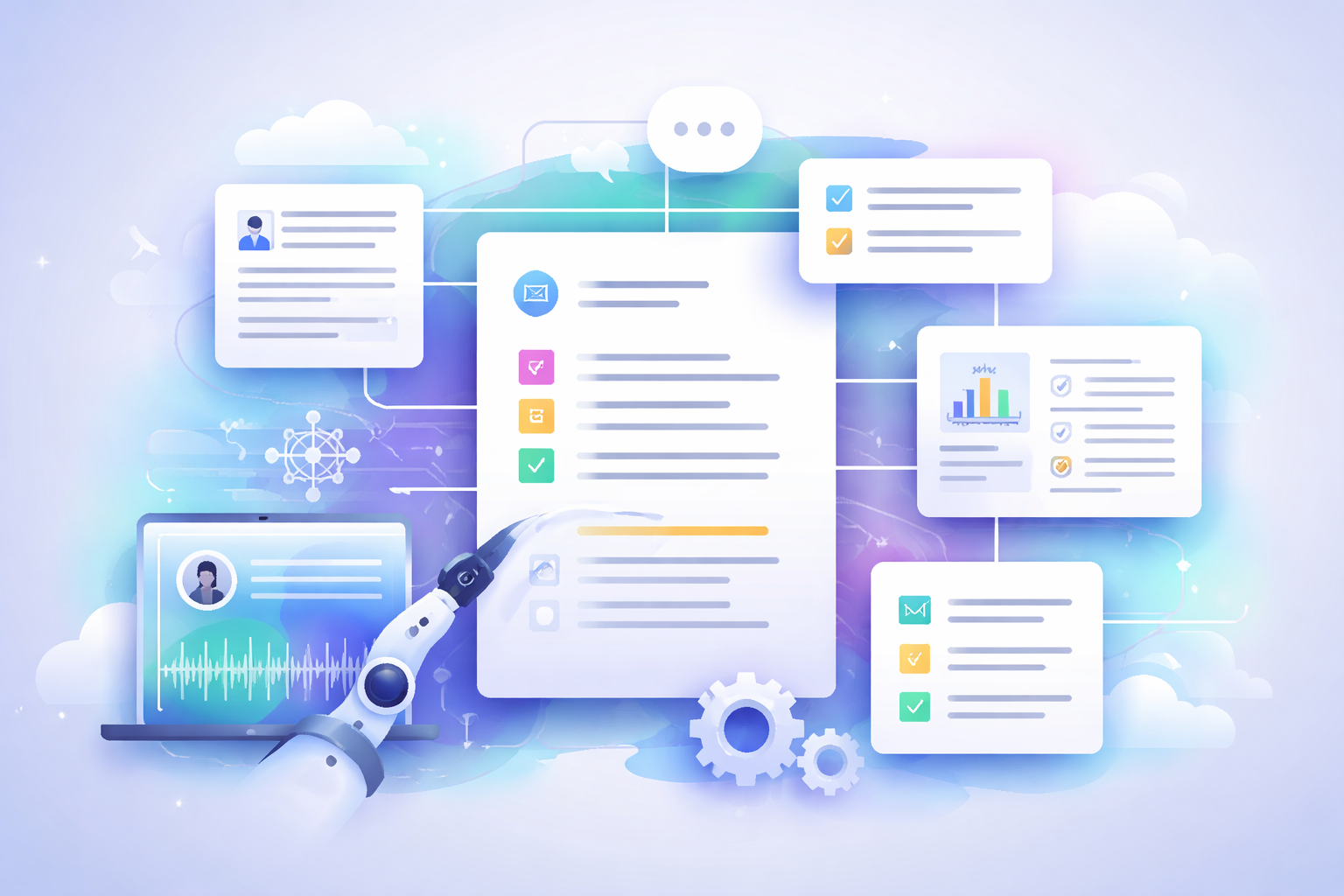How to Integrate AI In Customer Service Workflows
-
Kehinde Fatosa
- 10 min read
AI is transforming how customer service teams operate, but for many leaders, knowing where to start can be overwhelming. Should you begin with chatbots? Invest in call analytics? Or automate QA?
The truth is, integrating AI into your customer service workflow isn’t about replacing your people, it’s about enhancing their impact. When applied strategically, AI can eliminate repetitive work, surface hidden insights from customer interactions, and create more empathetic, efficient, and data-driven teams.
This guide breaks down exactly how to approach AI integration for customer service, what pitfalls to avoid, and five powerful use cases you can implement today.
Step 1: Define Why You’re Integrating AI
Before choosing any tool, get clear on your goals. Ask:
What’s broken in our current customer service process?
Are our teams overwhelmed by repetitive requests?
Do we lack visibility into why customers are unhappy?
Your goal should focus on freeing up your agents to do higher impact work, showing empathy, solving complex issues, and improving customer relationships. AI isn’t a magic wand. It’s an enhancer that helps your team move faster, understand customers better, and make smarter decisions.
Step 2: Start Small and Target High Impact Areas
Once you’ve defined your goal, identify a small but meaningful area where AI can make a measurable difference. For example:
Reducing response times on FAQs
Improving visibility into recurring customer complaints
Enhancing call quality monitoring
Streamlining coaching feedback
By starting small, you’ll learn faster, refine your approach, and build internal trust in the technology before scaling it across all workflows.
Step 3: Establish Metrics and Feedback Loops
AI adoption isn’t a one-time project, it’s a continuous process.
To ensure lasting results:
Define clear success metrics (e.g., CSAT, handle time, first response rate).
Gather feedback from agents and customers.
Continuously refine your AI models and workflows.
This helps you avoid the “set it and forget it” trap that causes most AI initiatives to fail.
5 Powerful AI Use Cases in Customer Service
1. AI Chatbots for 24/7 Support
Benefits:
Provide instant responses and eliminate wait times.
Handle FAQs and simple transactions automatically.
Seamlessly route complex issues to human agents.
Watch out for:
Over-reliance on bots for emotional or nuanced conversations.
Poorly designed escalation rules that frustrate customers.
Lack of continuous learning — ensure your bot evolves with feedback.
Pro Tip: Deploy chatbots for predictable, low-complexity queries and keep humans for high-empathy situations.
2. AI for Quality Assurance and Coaching
Traditional QA reviews only 1 – 3% of customer interactions. With AI, teams can now evaluate 100% of calls and chats, providing complete visibility into team performance and customer experience.
Benefits:
Automatically detect empathy gaps, tone issues, and product knowledge gaps.
Surface coaching opportunities instantly.
Reduce manual QA by up to 80%.
Common Challenges:
Using generic evaluation criteria that miss your brand’s tone and standards.
Lack of transparency — reps should understand how they’re scored.
Feedback that’s collected but never used for actual coaching.
The goal isn’t just to monitor calls, it’s to make every agent better.
3. AI Voice Agents for Call Handling
AI voice agents are an emerging tool for managing high-volume, low-complexity interactions.
Best Use Cases:
Appointment reminders
Balance checks
Account inquiries
Information verification
These virtual agents free up human reps to focus on complex, empathy driven conversations.
Limitations:
Voice AI still struggles with emotion, accents, background noise, and context switching, so use it for predictable workflows only.
4. Voice of Customer (VoC) Analytics
Every day, your business generates hours of conversation data across calls, chats, and emails — but most of it goes unused.
Voice of Customer analytics helps you unlock insights from that data, revealing trends, root causes, and opportunities to improve.
Applications:
Identify cross-sell and upsell opportunities
Detect recurring issues and root causes
Inform product development and marketing strategy
Predict churn and retention risks
By turning unstructured feedback into actionable intelligence, VoC analytics helps every team — from product to marketing — stay aligned with what customers truly need.
5. Knowledge Management With AI
AI-powered knowledge management systems create a single source of truth for your team.
Benefits:
Faster access to accurate information.
Consistent answers across all customer touchpoints.
Reduced agent ramp-up time and repeat inquiries.
To maximize results, keep your knowledge base updated, structured, and integrated with your chatbots and support tools.
Final Thoughts
AI won’t replace your customer service team, it will amplify their expertise.
The key is to use AI to remove repetitive work, strengthen feedback loops, and turn customer conversations into a growth engine for your business.
When implemented thoughtfully, with clear goals, metrics, and scope — AI can transform how you understand and serve your customers.







